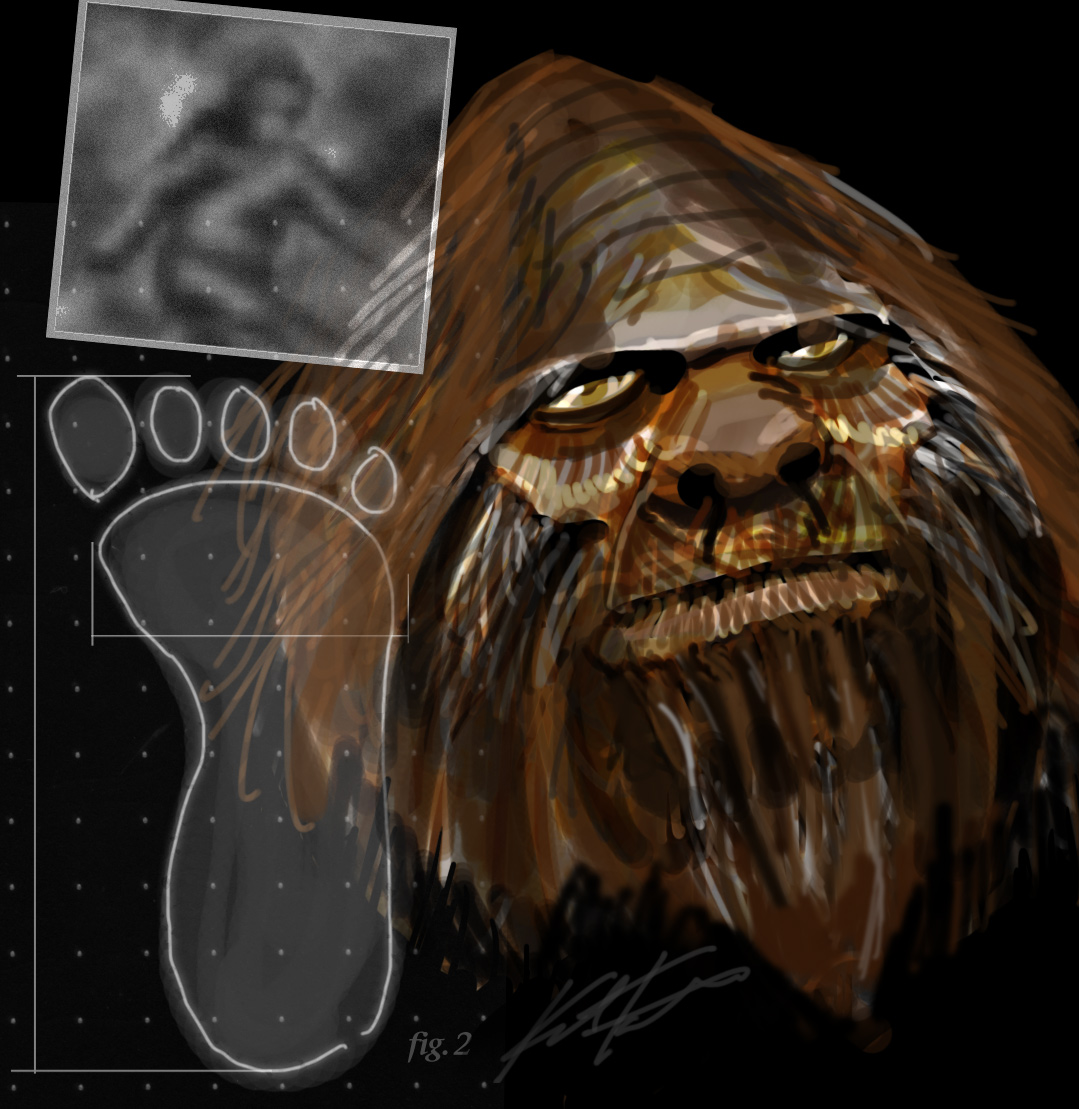
Bigfoot Blamed for Strange Shrieks

Do new recordings from Oregon's Blue Mountains offer good evidence of the mysterious bipedal creature known as Bigfoot? That's what some are claiming after hearing a recording of strange roars and shrieks given to The Oregonian newspaper.
When people think of Bigfoot evidence, casts of big footprints and blurry photos and films often come to mind. But someof the more interesting bits of evidence are sound recordings of alleged vocalizations. One company, Sierra Sounds, markets a CD called "The Bigfoot Recordings: The Edge of Discovery." Narrated by "Star Trek" actor Jonathan Frakes, the recording claims to have captured vocalizations among a Bigfoot family. The sounds include a series of guttural grunts, howls and growls.The liner notes offer testimonials from a "linguist" whose self-described credentials include playing the flute, speaking several languages, and having "a Russian friend [who] thinks I'm Russian."
She confidently asserts that the tapes are not faked, and that the vocal range is too broad to be made by a human. She also suggests that Bigfoot individuals have a language, possibly including "Sasquatch swear words."
In his 1992 book "Big Footprints: A Scientific Inquiry Into the Reality of Sasquatch" (Johnson Books, 1992), physical anthropologist Grover Krantz discussed his experience with Bigfoot recordings: "One ... tape was analyzed by some university sound specialists who determined that a human voice could not have made them; they required a much longer vocal tract. A Sasquatch investigator later asked one of these experts if a human could imitate the sound characteristics by simply cupping his hands around his mouth. The answer was yes." As for other such recordings, Krantz "listened to at least ten such tapes and find[s] no compelling reason to believe that any of them are what the recorders claimed them to be."
It's little wonder that one of the top scientific Bigfoot investigators held audio recordings in low regard: Sounds are simply poor evidence. [Infographic: Tracking Belief in Bigfoot]
Other explanations for the Blue Mountain sounds include foxes and coyotes, which — unlike Bigfoot — are known to exist in the area. Just because an animal call seems unusual or mysterious doesn't mean that it is. There are many factors than can affect how something sounds from far away, including temperature, wind and geographical features such as canyons.
Some suggest perhaps a hoaxer in the area is having a bit of fun with the local legend. And sometimes Bigfoot hunters go deep into the woods and "sound blast" pre-recorded "Bigfoot calls," hoping to elicit responses from any real Bigfoot nearby. Of course other people in the area can also hear the strange shrieks and howls coming from the dark wilderness and — not knowing that Bigfoot noisemakers are afoot — may report the sounds as genuine and unknown.
Sign up for the Live Science daily newsletter now
Get the world’s most fascinating discoveries delivered straight to your inbox.
Acoustics and Bigfoot
According to "Good Morning America's John Muller, this latest recording is not the only one; in fact the mysterious sounds have been coming out of the area since at least November. This raises an obvious question: If anyone seriously believes these sounds could be real evidence for Bigfoot, why haven't investigators been able to photograph or videotape the source of the sounds? For example the cast of the optimistically titled Animal Planet show "Finding Bigfoot" has spent months in that area, and so far have come up empty-handed. Surely a well-financed cable television show would be able to provide its team members with the equipment they need; Neal Karlinsky of ABC News noted that the "Finding Bigfoot" crew has "every bit of cutting edge technology — night vision gear and all the sensors they can get their hands on." So what's the problem?
This isn't rocket science; it's the science of acoustics. With an array of sensitive microphones placed strategically throughout an area, it's relatively simple to triangulate the location of a sound to within a few feet almost instantly. If that same area is also covered by an array of wide-angle, high-resolution cameras (using infrared at night), it should be fairly simple to trigger cameras nearest the source of the sound to photograph whatever created it: fox, hoaxer, Bigfoot or something else. Researchers could even use camera-mounted drones to help locate the vocalizations and monitor the area. Another option would be to set up a perimeter around areas where Bigfoot are said to be especially active and use sound-activated cameras. [Rumor or Reality: The Creatures of Cryptozoology]
Surely a group of 8-to-10-foot tall hairy bipedal animals can't be that hard to find if you place cameras around a hotspot of activity and wait a few weeks. Of course covering huge swaths of wilderness would not be cheap. But it would be a small price to pay if it finally provides hard evidence of Bigfoot — instead of more ambiguous roars, grunts and howls in the wilderness.
Benjamin Radford is deputy editor of "Skeptical Inquirer" science magazine and author of six books including "Tracking the Chupacabra: The Vampire Beast in Fact, Fiction, and Folklore." His Web site is www.BenjaminRadford.com.











